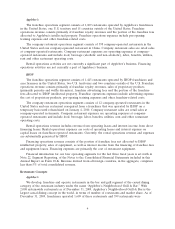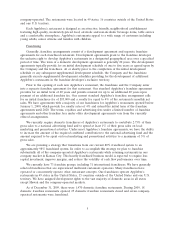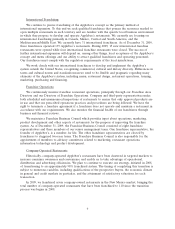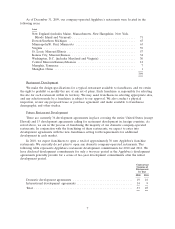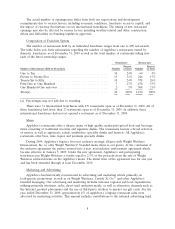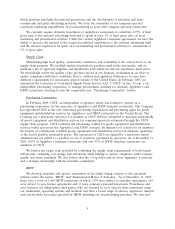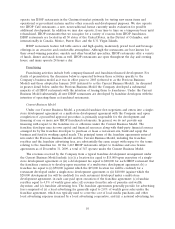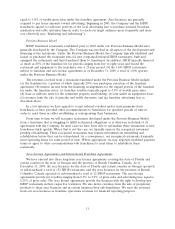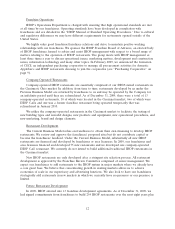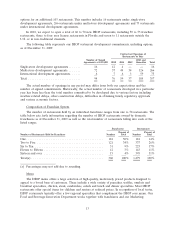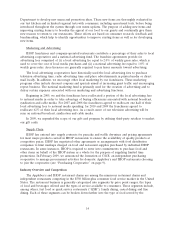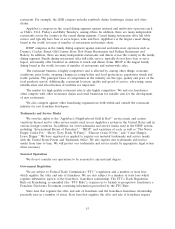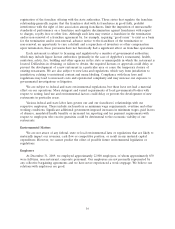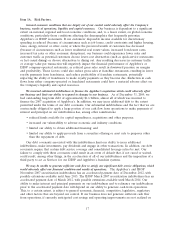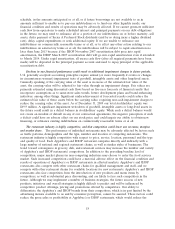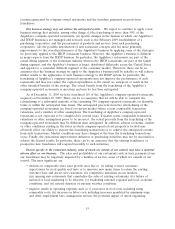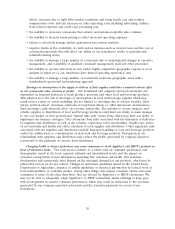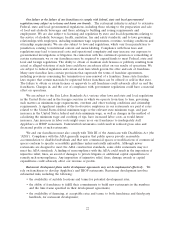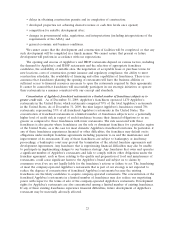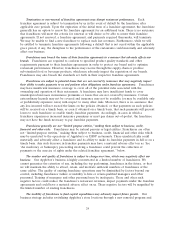IHOP 2009 Annual Report Download - page 33
Download and view the complete annual report
Please find page 33 of the 2009 IHOP annual report below. You can navigate through the pages in the report by either clicking on the pages listed below, or by using the keyword search tool below to find specific information within the annual report.
Department to develop new menu and promotion ideas. These new items are thoroughly evaluated in
our test kitchen and in limited regional tests with consumers, including operational tests, before being
introduced throughout the system through core menu updates. The purpose of adding new items and
improving existing items is to broaden the appeal of our food to our guests and continually give them
new reasons to return to our restaurants. These efforts are based on consumer research, feedback and
benchmarking, which help to identify opportunities to improve existing items as well as for developing
new items.
Marketing and Advertising
IHOP franchisees and company-operated restaurants contribute a percentage of their sales to local
advertising cooperatives and a national advertising fund. The franchise agreements provide for
advertising fees comprised of (i) a local advertising fee equal to 2.0% of weekly gross sales, which is
used to cover the cost of local media purchases and (ii) a national advertising fee equal to 1.0% of
weekly gross sales. Area licensees are generally required to pay lesser amounts toward advertising.
The local advertising cooperatives have historically used the local advertising fees to purchase
television advertising time, radio advertising time and place advertisements in printed media or direct
mail locally. In addition, we encourage other local marketing by our franchisees. These marketing
programs often include discount coupons and specials aimed at increasing guest traffic and encouraging
repeat business. The national marketing fund is primarily used for the creation of advertising and to
defray certain expenses associated with our marketing and advertising functions.
Beginning in 2005, we and the franchisees have reallocated a portion of the local advertising fees
to national media in order to take advantage of buying efficiencies associated with national broadcast,
syndication and cable media. For 2007 and 2008 the franchisees agreed to reallocate one half of their
local advertising fees to national media spending; for 2010 and 2009 the franchisees agreed to
reallocate 62% of their local advertising fees. As a result, more of our television advertising will be
seen on national broadcast, syndication and cable media.
In 2009, we expanded the scope of our gift card program by utilizing third-party retailers to market
our gift cards.
Supply Chain
IHOP has entered into supply contracts for pancake and waffle dry-mixes and pricing agreements
for most major products carried in IHOP restaurants to ensure the availability of quality products at
competitive prices. IHOP has negotiated other agreements or arrangements with food distribution
companies to limit markups charged on food and restaurant supplies purchased by individual IHOP
restaurants. In some instances, IHOP is required to enter into commitments to purchase food and
other items on behalf of the IHOP system as a whole for the purpose of supplying limited time
promotions. In February 2009, we announced the formation of CSCS, an independent purchasing
cooperative to manage procurement activities for domestic Applebee’s and IHOP restaurants choosing
to join the cooperative (see ‘‘Purchasing Cooperative’’ on page 9).
Industry Overview and Competition
The Applebee’s and IHOP restaurant chains are among the numerous restaurant chains and
independent restaurants competing in the $550 billion-plus consumer food service market in the United
States. The restaurant business is generally categorized into segments by price point ranges, the types
of food and beverages offered and the types of service available to consumers. These segments include,
among others, fast food or quick service restaurants (‘‘QSR’’), family dining, casual dining and fine
dining. Each of these segments can be broken down further into the type of food served by the
14


